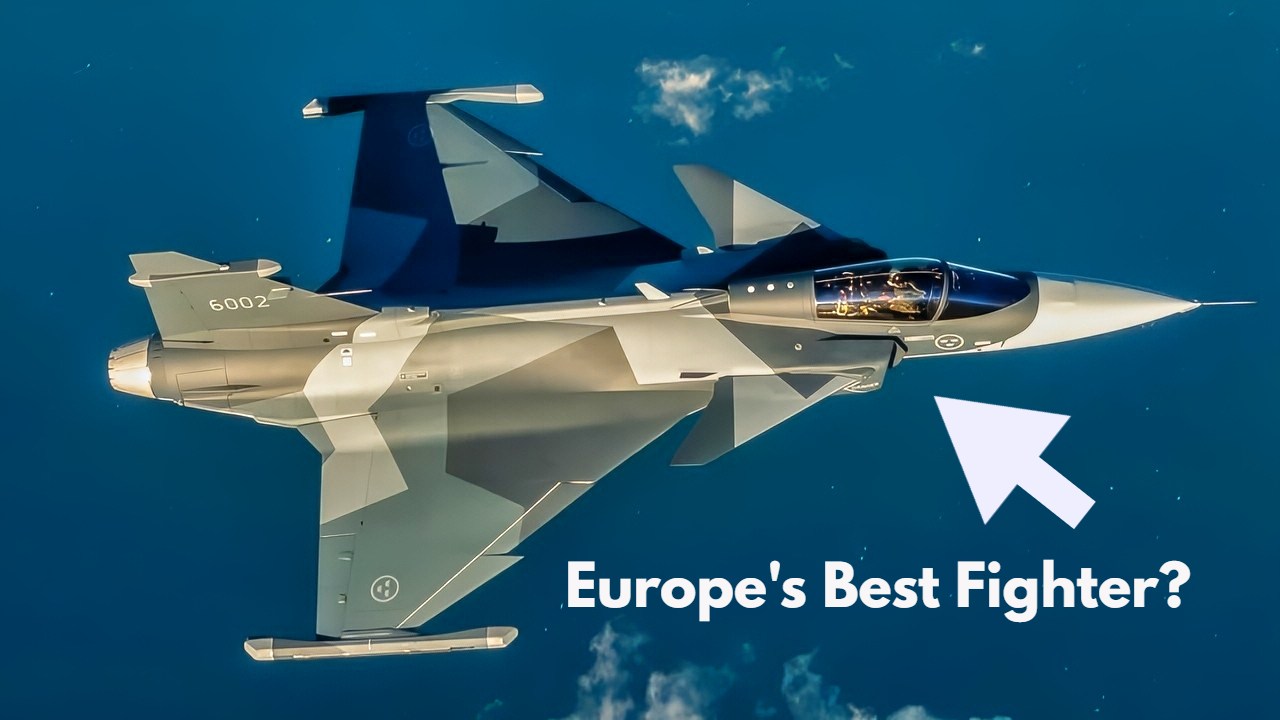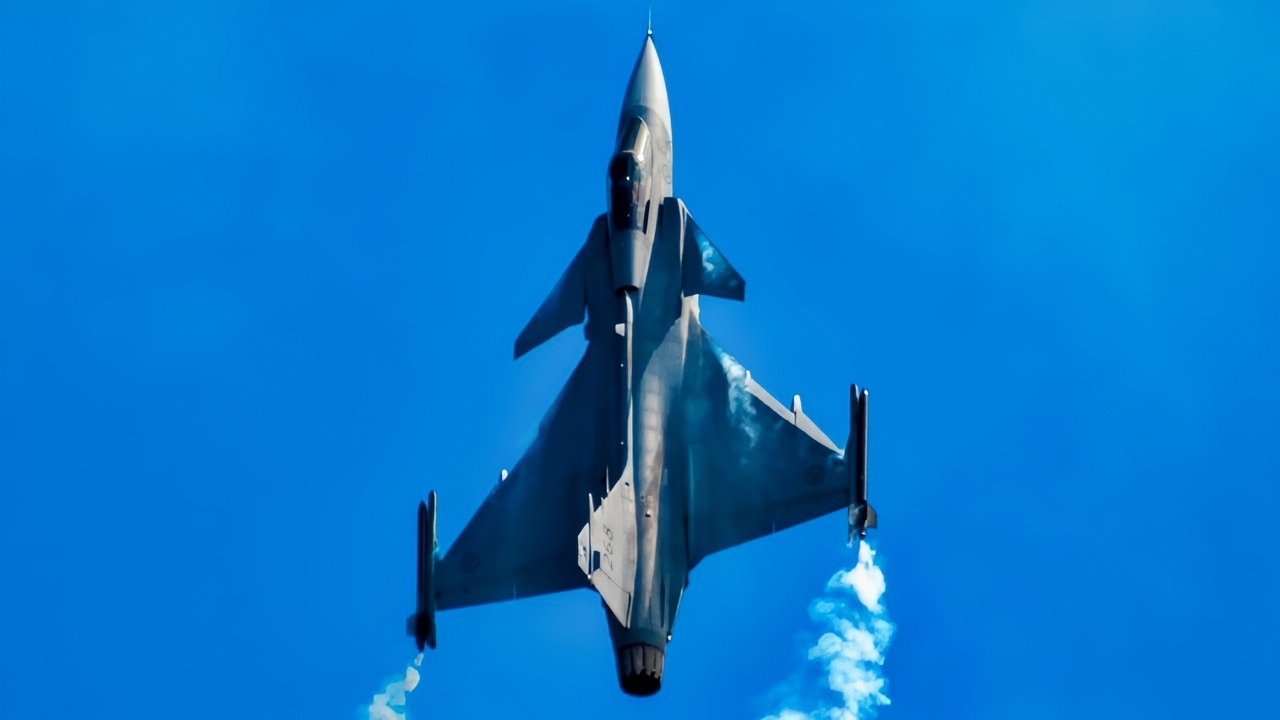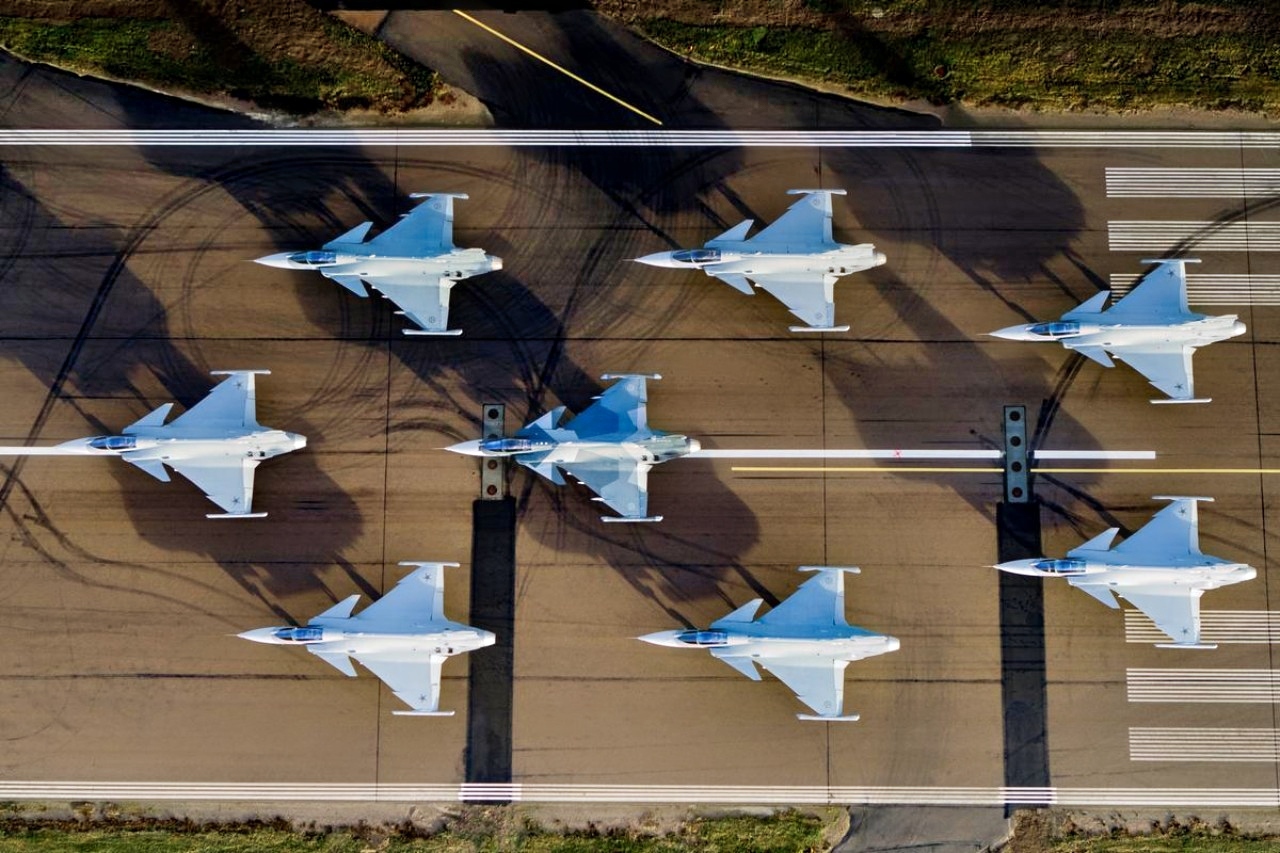Key Points and Summary – Sweden’s Saab JAS 39 Gripen is a highly adaptable 4.5-generation multirole fighter built around affordability, flexibility, and smart avionics.
-The problem: with what could be many orders coming now and in the future, Sweden might not be able to keep up with demand. Much of this is becuase of the weapons loadout it can carry into battle.

JAS 39 Gripen E. Image Credit: Creative Commons.

A Swedish Air Force Saab JAS 39 Gripen climbs during the 2019 Royal International Air Tattoo at RAF Fairford, England, July 20, 2019. This year, RIAT commemorated the 70th anniversary of NATO and highlighted the United States’ enduring commitment to its European allies. (U.S. Air Force photo by Tech Sgt. Aaron Thomasson)
-With nine hardpoints, up to 7,200 kg of ordnance, and weapons ranging from Meteor BVR missiles to Taurus cruise missiles and precision-guided bombs, it can shift from air defense to strike or close air support in a single sortie.
-Newer Gripen F variants add the ES-05 Raven AESA radar, IRST, strong datalinks, and robust electronic warfare suites.
-A single F414 engine keeps costs and fuel burn down, while short-field performance and road-base capability make it attractive to export customers—including Ukraine.
Why the JAS 39 Gripen Might Be the Perfect Non-Stealth Fighter for a Big War
The Saab JAS 39 Gripen is the most advanced fourth-generation fighter jet produced by Sweden. The aircraft is available in single- or double-seat configurations and is capable of performing a wide range of missions, from air defense to close air support.
The Gripen’s design allows it to carry a wide array of weapons, including long-range air-to-air missiles, cruise missiles, and conventional unguided bombs.
These weapons enhance the JAS 39’s versatility, making it a reliable aircraft for pretty much any situation.
Armaments and Weaponry
Each JAS 39 variant is equipped with nine hardpoints, one of which is reserved for a FLIR/ECM/LD/Recon pod.
Most variants are also equipped with a 1 x 27mm Mauser BK-27 autocannon for close engagements, though the twin-seat Gripen B and D models lack the cannon to make space for the second seat.
The Gripen can carry a maximum payload of around 7,200 kg (15,900 lb). The aircraft can have a wide range of armaments depending on its mission.
For air-to-air missions, it can carry AIM-9 Sidewinders, IRIS-T anti-air missiles, AIM-120 ARAAM, and Meteor BVR Missiles. These armaments provide the Gripen with a tactical advantage in both BVR and close-range engagements.
For air-to-ground missions, the JAS 39 is equipped with unguided 13.5 rockets, which are fired from rocket pods. Guided munitions include GBU-12 Paveway II and GBU-39 laser-guided bombs. Air-to-surface missiles include the AGM-65 Maverick, RBS-15F anti-ship, and Taurus KEPD 350 air-launched cruise missiles.

A UK Typhoon flies above the Baltics on 25 May 2022. UK and Czech fighter jets have been taking part in air defence training over the Baltic region. UK Eurofighter Typhoons, F-35s and Czech Gripens were involved in an exercise as part of Neptune Shield 22 (NESH22), a multinational maritime vigilance activity. NESH22 has seen a range of multi-domain activities between air, land and maritime assets across Europe and in the Baltic and Mediterranean Seas. It runs from 17 to 31 May 2022.

JAS 39 Gripen. Image Credit: Creative Commons.
The aircraft is also capable of dropping conventional 500-pound unguided bombs. This diverse array of munitions enables the Gripen to perform a range of missions, from air defense to close air support.
Avionics
Complementing the Gripen’s weaponry is a sophisticated set of avionics that ensures that the aircraft always has the advantage in networked environments.
The newest variant of the JAS 39, the Gripen F, is equipped with an ES-05 Raven AESA radar developed by Leonardo.
This radar provides a full 100-degree field of view, allowing the aircraft to remain locked onto targets while turning away, increasing its survivability and maintaining datalinks with missiles in flight.
The system offers the same capabilities as larger radars but with half the weight. The radar’s range is not publicly available.
In addition to the AESA radar, the Gripen’s avionics include Infra-Red Search and Track (IRST) systems and datalinks, which are fully integrated with the radar.
While the JAS 39 is not a stealth aircraft, it is equipped with a variety of electronic warfare suites and jammer pods to reduce its radar and infrared signatures and jam incoming missiles.
While these measures do not confer the survivability of a stealth aircraft, they enhance its survivability in contested areas, allowing it to assume more perilous roles such as air superiority and close air support.
Design and Engine Performance
The JAS 39’s survivability and lethality are further boosted by the aircraft’s aerodynamic and efficient design.
The aircraft features a rear-set delta-wing configuration with canards to boost its mobility. The Gripen F features a lengthened fuselage for more internal fuel capacity.
It features a singular General Electric F414-GE-39E afterburning turbofan engine. The aircraft is a single-seat fighter jet, though the Gripen B and D feature a second seat to reduce pilot workload; this came at the cost of less internal fuel and the loss of the internal cannon.
Despite its single engine, the Gripen performs well across many aspects. It has a maximum speed of Mach 2 and can cruise at Mach 1.5 without afterburners (only the Gripen F variant can supercruise).
The aircraft has a maximum combat range of approximately 1,500 km (930 nautical miles). The advantage of the single-engine layout is that it requires less fuel and costs less than some double-engine aircraft.
The disadvantage is that the plane has a shorter combat range and worse performance metrics in some areas than other fighter jets.
Sweden’s Most Successful Fighter Jet
Development of the JAS 39 began in 1982, when the Swedish government officially approved a project to replace its older Saab 35 Draken and Saab 37 Viggen fighters.
The effort was led by Saab and a consortium of other manufacturers to develop the next and most advanced fighter for the Swedish Air Force.
The project’s requirements were for the aircraft to have a “multi-role airframe” and to be capable of reaching Mach 2.
To keep costs down, the designers settled on a single-engine configuration that minimized weight. The aircraft also had to be able to take off from rugged roads and shorter landing strips, as good roads may be unavailable in an active war. The result of these efforts was the JAS 39 Gripen, which officially entered service in 1996.
At first, the aircraft was mired in controversy and corruption scandals, but now it is a mainstay in many air forces. The aircraft is operated by seven air forces worldwide, with others expressing interest in acquiring it.
Most recently, Ukraine has expressed interest in purchasing the fighter, with plans to deliver at least 100 aircraft over the next several years.
Canada has also been considering the JAS-39 as an alternative to the F-35 amid deteriorating relations with the U.S.
About the Author: Isaac Seitz
Isaac Seitz, a Defense Columnist, graduated from Patrick Henry College’s Strategic Intelligence and National Security program. He has also studied Russian at Middlebury Language Schools and has worked as an intelligence Analyst in the private sector.
More Military
Could America Have Lost the Revolutionary War?
The Marines Don’t Have Tanks Anymore
The Essex-Class Aircraft Carriers Have An Embarrassing Message for the U.S. Navy
‘New’ Mach 4 MiG-41 6th Generation Stealth Fighter Has Warning for U.S. Air Force
Boeing’s F-47 NGAD 6th Generation Stealth Fighter Is No ‘Mission Impossible’










